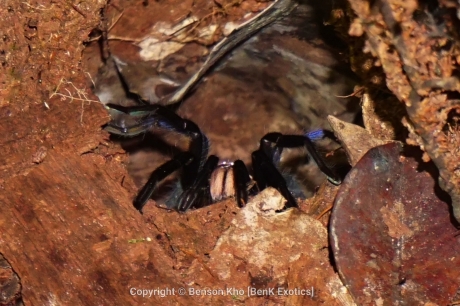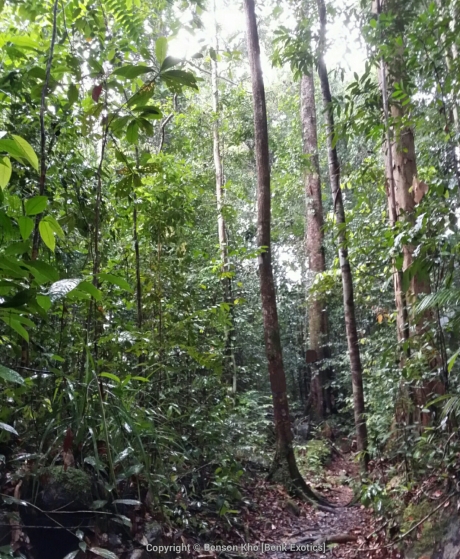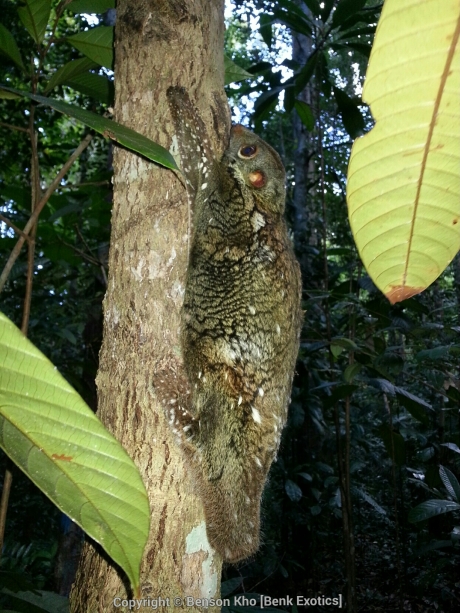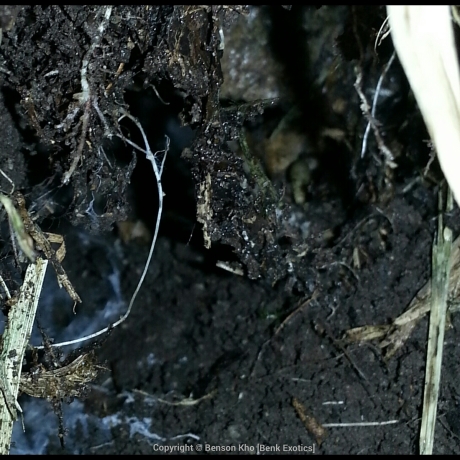It was sometime in early 2013 during a jungle hiking trip that Josie and I first came across a peculiar tarantula with blue legs and a very small sized mature male tarantula. The former have bluish legs. We didn’t get to see much of it as it escaped into its burrow the moment we moved closer. The second tarantula is so small it measures only 1.5 inch leg span. This specimen, regardless of its size was already a mature male with fully developed palpal bulbs. This is the smallest mature male tarantula I’ve ever seen. I believe it belongs to the genus Phlogiellus spp – a group of semi arboreal dwarf species from South East Asia.
So in November 2013 we set out to the same location again hoping to find the habitat of these two species and to learn more about them. This is the account of our second trip.
We started the hike around 7 am. The weather was cool, drizzling and humidity was high.
After hiking for about 20 minutes I found this Sunda flying lemur (Galeopterus variegatus). This protected species can be found throughout South East Asia. Being a nocturnal species, this gliding mammal is less active during the day hence I was able to get very close to it for a picture.

Dead tree trunk with a Wagler’s pit viper (Tropidolaemus wagleri)
Josie spotted this Wagler’s pit viper near a dead tree. As we approached closer to take a picture of it, something caught my attention! Not far away, a tarantula is peeking out of its burrow. It was the tarantula we came looking for! This time, we managed to snap a picture of it before it went into its burrow again. What a shy fellow.

We then head on to look for more but all we could find was the smaller species. Below is a picture of what looks like a good home for Phogiellus sp.
Upon further inspection, I found the first burrow with clear indication that it’s occupied. Its burrow is small with opening of less than 2 cm in diameter, lined with silk.
Another burrow was found just a few inches away from the first. These burrows are all heavily lined with silk acting as support from the loose decomposing wood matter. What’s interesting is that they share the same habitat with a colony of termites. It is not known if they actually feed on the termites or their larvae or do they just coexist for an unknown reason. My guess is these termites might serve as the tarantulas’ unlimited food supply.
Each specimens measures only 1 inch to 1.5 inch leg span.

We measured this mature male to be only 1.5inch leg span.
Until a proper identification is done, the blue legged tarantula remains an undescribed tarantula likely from the genus Chilobrachys or Selenocosmia, judging from the looks of its body and legs. As for the tiny species, I believe it’s a Phlogiellus spp.





